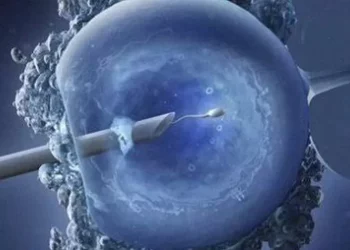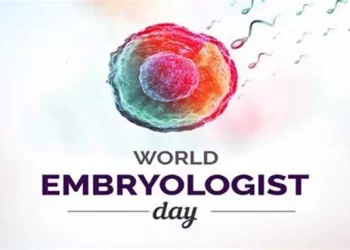Understanding the timeline and factors affecting a woman’s fertility is crucial for family planning and managing expectations regarding conception. This article delves into the natural decline in fertility, the impact of age on egg quantity and quality, and the various factors influencing reproductive health.
Age and Egg Quantity
Women are born with a finite number of eggs, known as oocytes, which diminish over time. At birth, a baby girl typically has about 1 to 2 million eggs. This number decreases significantly by the time she reaches puberty, leaving her with approximately 300,000 to 400,000 eggs. As she ages, this number continues to drop; by the time a woman is 37, she has around 25,000 eggs left.
The decline in egg quantity is a natural part of the aging process. Each menstrual cycle, a number of eggs are recruited to potentially be ovulated, but usually only one egg is released, and the rest undergo a process called atresia (degeneration). As a woman ages, the number of eggs available for recruitment diminishes, leading to fewer opportunities for ovulation and, consequently, conception.
Age of Decline
Fertility generally starts to decline in a woman’s early thirties. Around age 32, the rate of decline becomes more pronounced, and after age 37, it accelerates significantly. By age 40, the chance of conceiving naturally in any given menstrual cycle is substantially reduced.
Studies show that the probability of getting pregnant in one cycle for a healthy, fertile 30-year-old woman is about 20-25%. By age 40, this probability drops to around 5%. This steep decline is due to both the reduction in the number of eggs and the increased likelihood of chromosomal abnormalities in the remaining eggs.
Egg Quality
Not only does the quantity of eggs decrease with age, but the quality of those eggs also deteriorates. As women age, the eggs are more likely to have chromosomal abnormalities, which can lead to difficulties in conceiving and maintaining a pregnancy. Older eggs have a higher risk of aneuploidy (abnormal number of chromosomes), which can result in miscarriages or congenital conditions such as Down syndrome.
The quality of eggs is paramount for successful conception and healthy pregnancy. As a woman reaches her mid-thirties and beyond, the proportion of abnormal eggs increases, which explains the higher rates of infertility and pregnancy complications in older women.
Menopause
Menopause marks the end of a woman’s reproductive years, typically occurring around age 51. By this time, a woman may have around 1,000 eggs left, but these are not viable for conception. Menopause is defined by the cessation of menstrual periods for 12 consecutive months, signifying that the ovaries have stopped releasing eggs and producing the hormones estrogen and progesterone at the levels necessary for reproduction.
The transition to menopause, known as perimenopause, can begin several years before menopause itself. During this period, hormonal fluctuations can cause irregular menstrual cycles, making it more challenging to predict ovulation and increasing the difficulty of conceiving naturally.
Men’s Fertility
While much attention is given to female fertility, it’s important to note that men also experience a decline in fertility, albeit at a slower rate and later in life. Men’s fertility typically starts to decrease around age 40 to 45 due to a gradual reduction in both the quantity and quality of sperm.
Sperm count, motility (the ability of sperm to move), and morphology (sperm shape) all decline with age. Additionally, older men have a higher likelihood of sperm with DNA fragmentation, which can affect embryo quality and increase the risk of miscarriage and genetic abnormalities in offspring.
Lifestyle Factors
Genetic and lifestyle factors play a significant role in the rate of fertility decline. For instance, smoking has been shown to accelerate the loss of eggs and can bring on menopause earlier. Other factors that can negatively impact fertility include:
1. Excessive alcohol consumption: Can disrupt menstrual cycles and reduce ovarian reserve.
2. Obesity: Can lead to hormonal imbalances that affect ovulation.
3. Poor diet and lack of exercise: Can contribute to overall health issues that indirectly affect fertility.
4. Stress: Can interfere with the menstrual cycle and ovulation.
5. Environmental toxins: Exposure to certain chemicals and pollutants can harm reproductive health.
Taking steps to maintain a healthy lifestyle, such as eating a balanced diet, exercising regularly, managing stress, and avoiding smoking and excessive alcohol consumption, can help preserve fertility.
Fertility Testing
For those concerned about fertility, various tests are available to assess reproductive health. These tests can be done at home, purchased from pharmacies or online, or conducted at fertility clinics. Common fertility tests include:
1. Anti-Müllerian Hormone (AMH) Test: Measures the level of AMH in the blood, which correlates with the number of remaining eggs.
2. Follicle-Stimulating Hormone (FSH) Test: Conducted on the third day of the menstrual cycle, this test measures FSH levels to assess ovarian reserve.
3. Antral Follicle Count (AFC): An ultrasound that counts the number of follicles in the ovaries.
4. Ovulation Predictor Kits (OPKs): Detect the surge in luteinizing hormone (LH) that precedes ovulation.
These tests can provide valuable information about a woman’s fertility status and help guide decisions regarding family planning or seeking fertility treatments.
Medical Interventions
Advancements in reproductive technology offer various options for those facing fertility challenges. One of the most common interventions is in vitro fertilization (IVF). IVF involves stimulating the ovaries to produce multiple eggs, retrieving the eggs, fertilizing them with sperm in a lab, and transferring the resulting embryos into the uterus.
The success rate of IVF varies depending on the woman’s age. For women under 35, the success rate per cycle is approximately 40%. This rate decreases with age, dropping to around 15% for women aged 40 and older.
Other fertility treatments include:
1. Intrauterine Insemination (IUI): Sperm is directly placed into the uterus around the time of ovulation.
2. Egg Freezing: Allows women to preserve their eggs at a younger age for future use.
3. Donor Eggs or Sperm: Can be used in cases where the woman’s or man’s own gametes are not viable.
Risks of Late Pregnancy
Conceiving at an older age can increase the risks of complications during pregnancy and the likelihood of chromosomal abnormalities. Women who conceive after age 35 are at higher risk for:
1. Gestational diabetes
2. High blood pressure
3. Preterm birth
4. Low birth weight
5. Placenta previa
6. Cesarean delivery
Additionally, the risk of having a baby with chromosomal abnormalities, such as Down syndrome, increases with maternal age. For example, at age 25, the risk of Down syndrome is about 1 in 1,250, whereas at age 40, the risk rises to approximately 1 in 100.
Despite these risks, many women have healthy pregnancies and babies in their late thirties and forties. Prenatal care, regular monitoring, and a healthy lifestyle can help manage and mitigate these risks.
Conclusion
Understanding the natural decline in fertility with age is essential for making informed decisions about family planning and reproductive health. While fertility starts to decline around age 32 and drops more dramatically after age 37, various factors, including egg quality, lifestyle choices, and medical interventions, play a role in a woman’s ability to conceive.
For those facing fertility challenges, numerous options are available, from fertility testing to advanced reproductive technologies. Staying informed and seeking professional guidance can help navigate the complexities of fertility and achieve the best possible outcomes for parenthood aspirations.
Related Topics:
A Complete Overview: Can Being Underweight Cause Infertility?



























